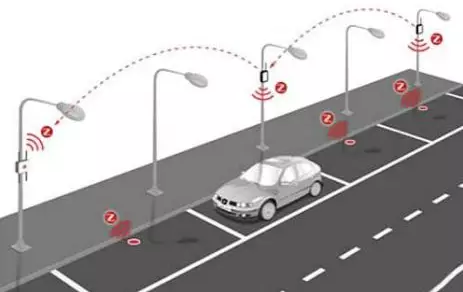
The wireless module is a modular product of digital data transmission radio. It refers to a high-performance professional data transmission radio module realized with the help of single-chip microcomputer technology and radio technology. The wireless transceiver module is mainly used to control wireless data transmission and reception through a single-chip microcomputer. Generally, it is FSK, GFSK modulation mode. If it is divided by operating frequency, there are 170MHz, 230MHz, 315MHz, 433MHz, 868MHz, 915MHz, 2.4GHz and so on.
The Internet of Things is an important part of the new generation of information technology and an important stage of development in the "informatization" era. The Internet of Things is a network that extends and expands its user end to any item and item for information communication and exchange to achieve intelligence.

With the increasing number of IoT product forms, on the one hand, module prices will continue to fall; on the other hand, IoT modules will continue to develop in a diversified direction to meet the functional requirements of more and more different types of equipment. In the next few years, wireless communication modules for the Internet of Things will develop in the direction of more integration and miniaturization, and more and more chips and functions will be integrated into the IoT module.
From the current development situation, the typical applications of wireless modules in the field of Internet of Things are as follows:
Industrial applications
Industry is an important area for wireless module applications in the Internet of Things. Various types of terminal sensors with environmental awareness capabilities communicate data collected through wireless modules to achieve intelligent monitoring and intelligent control in the production process. This greatly improves production efficiency, improves product quality, reduces production costs, and reduces traditional industrial Ascension to a new stage of smart industry.
For example, parts processing enterprises use various sensors and wireless modules to achieve real-time monitoring of the width, thickness, and temperature of processed parts during the production process, thereby improving production efficiency and optimizing production processes.
Agricultural applications
The application of the wireless module in the agricultural field is to collect the temperature, humidity signals and environmental parameters such as light, soil temperature, leaf surface humidity, etc. in the greenhouse in real time, and realize the automatic stop or start of specified equipment through the Internet of Things technology. It can be processed at any time according to user needs, providing a scientific basis for automatic monitoring of agricultural ecological information, automatic control of the environment, and intelligent management. The temperature and humidity signals are collected through sensors, and the data is transmitted through the wireless module to achieve remote control of the temperature and humidity in the greenhouse, and record the scene conditions to ensure the temperature and humidity balance in the greenhouse.
Smart home applications
Smart home is the automation of various home devices (such as audio and video equipment, network appliances, curtain control, air conditioning control, lighting systems, security systems, etc.) through smart home network networking. Through wireless networks, remote control of home devices can be realized. . Smart home is an important area for wireless module applications. Compared with ordinary homes, smart homes not only provide comfortable, pleasant and high-quality home living spaces, and realize more intelligent home security systems; they also transform the home environment from the original passive still structure into a tool with active wisdom, providing a full range of tools Information interaction function makes you feel more comfortable and worry-free.
Smart medical applications
The intelligent medical system uses simple and practical home medical sensing equipment to monitor the physiological indicators of the patients or the elderly in the home in real time, and transmits the generated physiological indicator data to the caregiver or the relevant medical unit through the wireless module. According to customer needs, relevant value-added services have now begun to be provided, such as emergency call assistance services and expert consulting services.
Smart city security application
Smart city security system is a unified monitoring of the safety of the city. The electronic equipment equipped with wireless modules is used to network decentralized and independent image collection points to remotely monitor, transmit, store, and manage in real time, to achieve unified monitoring, unified storage and unified management of city security, and to provide city management and builders with A new, intuitive, and extended audiovisual management tool.
Environmental monitoring applications
The environmental monitoring system monitors the water quality of the earth's surface water in real time, thereby realizing timely grasp of the water quality status of the main sections of the main river basin, early warning and forecast of major or river basin water pollution accidents, resolving water pollution accident disputes across administrative regions, and monitoring the total Implementation of control system. The West Lake Environmental Monitoring Project provides water quality data of West Lake to environmental protection departments through various monitoring wireless modules installed in the West Lake area, monitors the water quality of West Lake waters in real time, and reports the data of monitoring points to relevant management departments via the Internet. .
Intelligent transportation applications
Intelligent transportation system is the real-time monitoring and management of the car's position and speed, image information inside and outside the car, and other vehicle parameters, effectively meeting the various needs of vehicle owners for vehicle management. The wireless video surveillance system for the bus industry uses the wireless video surveillance and GPS positioning functions of on-board equipment to monitor the running status of the bus in real time. The intelligent bus station interacts with the data of the electronic station board through the media distribution center, and realizes the functions of public transport dispatch information data and multimedia data. It can also use the electronic station board to realize the function of advertising.